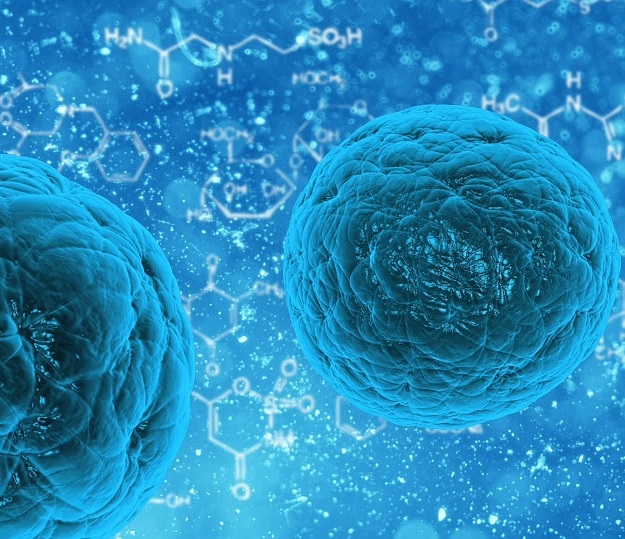The family herpesviridae includes three main subfamilies, alpha, beta and gamma herpesvirinae. The core, capsid, tegument and envelope together compose the spherical virion. The icosahedral viral capsid of herpesviruses is surrounded by a layer of protein called the tegument and an outer lipid bilayer envelope studded with glycoproteins. These proteins are the main targets of the immune response and for vaccine development. Herpes virions contain large double-stranded, linear DNA genomes of 125-229 kb that encode up to 200 genes. Those identified in humans include herpes simplex virus-1 (HSV-1) and herpes simplex virus-2 (HSV-2), varicella zoster virus (VZV), cytomegalovirus (CMV), human herpesvirus variant 6A (HHV6A), human herpesvirus variant 6B (HHV6B) and human herpesvirus-7 (HHV-7).

HSV-1 is a highly successful human pathogen, permanently infecting the majority of the adult population. During a primary infection, the virus infects epithelial cells at the host’s periphery, usually in the orofacial region. Following this initial infection, HSV-1 invades sensory neurons of a ganglion where it establishes a life-long latent infection. The virus can periodically reactivate during the lifetime of an infected individual, leading to the production of an infectious virus at or near the site of primary infection. These reactivation events both contribute to HSV-1 disease and allow for effective horizontal transmission and persistence of the virus in the human population.
The most common symptoms of infection by HSV-1 are cold sores. The thin moist lining of many parts of the body, such as the mouth, throat, nose, and genitals, are ulcers of the skin or mucous membranes.
Herpes simplex virus infection can be diagnosed by scraping the base of the cold sore and examining cells under the microscope, by growing the virus, or by a polymerase chain reaction (PCR) test in a pathology laboratory. Treatments can relieve the symptoms, despite there is no cure for herpes. Medication can decrease the pain related to an outbreak, shorten healing time, and also decrease the total number of outbreaks. Drugs including Famvir, Zovirax, and Valtrex are used to treat the symptoms of herpes. Warm baths may relieve the pain associated with genital sores. Topical therapy (cream or ointment) is available through pharmacies without a prescription. Oral antiviral therapy is restricted to severe cases and requires a doctor's prescription. For prevention, young children unable to follow good hygiene practices should be excluded from childcare, preschool or school while the cold sore is sweeping; cold sores should be covered with a dressing where possible; do not kiss on or near the cold sore; do not share food or drink containers; dispose of used tissues correctly.
VZV is an exclusively human neurotropic, double-stranded DNA alphaherpesvirus. VZV infection causes two clinically distinct forms of disease: varicella (chickenpox) and herpes zoster (shingles). Primary VZV infection results in the diffuse vesicular rash of chickenpox. Endogenous reactivation of latent VZV typically results in a localized skin infection known as herpes zoster, or shingles. Chickenpox is generally a mild disease in children, although serious complications can sometimes occur. Complications from VZV infection are more common in neonates, adults, or immunocompromised persons.
Symptoms of chickenpox may include slight fever and cold-like symptoms, followed by a rash which appears as blisters that crust to form scabs and is usually itchy. Shingles occur usually several decades later when the body’s immunity to the virus drops and the virus, following a previous chickenpox infection. The first symptoms of shingles are usually pain and burning on one side of the body and occurs in small patches. A red rash typically follows.
Chickenpox and shingles have a typical appearance and are usually diagnosed by clinical presentation. This can be confirmed by a swab test of the rash detecting the varicella-zoster virus. A blood test can detect if someone has protection from chickenpox infection in the past, but the test may not be helpful in determining if there is adequate immunity to varicella-zoster virus following vaccination. For all cases, calamine lotion or promethazine may be useful for the itch. Children or adolescents who have chickenpox or shingles should not take Aspirin. The best way is to get the chickenpox vaccine. After vaccination, most people will not get chickenpox and will not develop severe shingles symptoms.
CMV is an important public health problem in pediatric populations. It is a leading cause of childhood hearing loss, cognitive deficit, and vision impairment. The number of children with congenital CMV-related disabilities is similar to or greater than the number with better-known conditions such as Down syndrome or spina bifida. The economic burden caused by congenital CMV is substantial, as many affected children require significant ongoing care, special therapeutic and educational services. This has led to calls for improved strategies to reduce the burden of congenital CMV, including earlier identification through maternal or newborn screening, vaccines, behavioral intervention, treatment for infected pregnant women, and treatment of affected infants.
Usually, there is no symptom in children and adults with CMV infection. Occasionally, some symptoms, such as fever, sore throat, swollen glands, abdomen pain and jaundice can occur. In certain populations, the infection can result in severe disease in infants infected before, during, or shortly after birth, people who have had a transplant and people with severe immune suppression.
Laboratory tests, such as tests of blood, other body fluids or tissue samples, can detect CMV virus. Treatment generally isn't necessary for healthy children and adults. Healthy adults who develop CMV mononucleosis generally recover without medication. However, people with compromised immune systems and newborns with CMV infection need treatment. The type of treatment depends on the symptoms and their severity. The most common treatment is antiviral medications, which can reduce the reproduction of the virus, but can't eliminate it. New medications and vaccines to treat and prevent CMV are under study.
References: